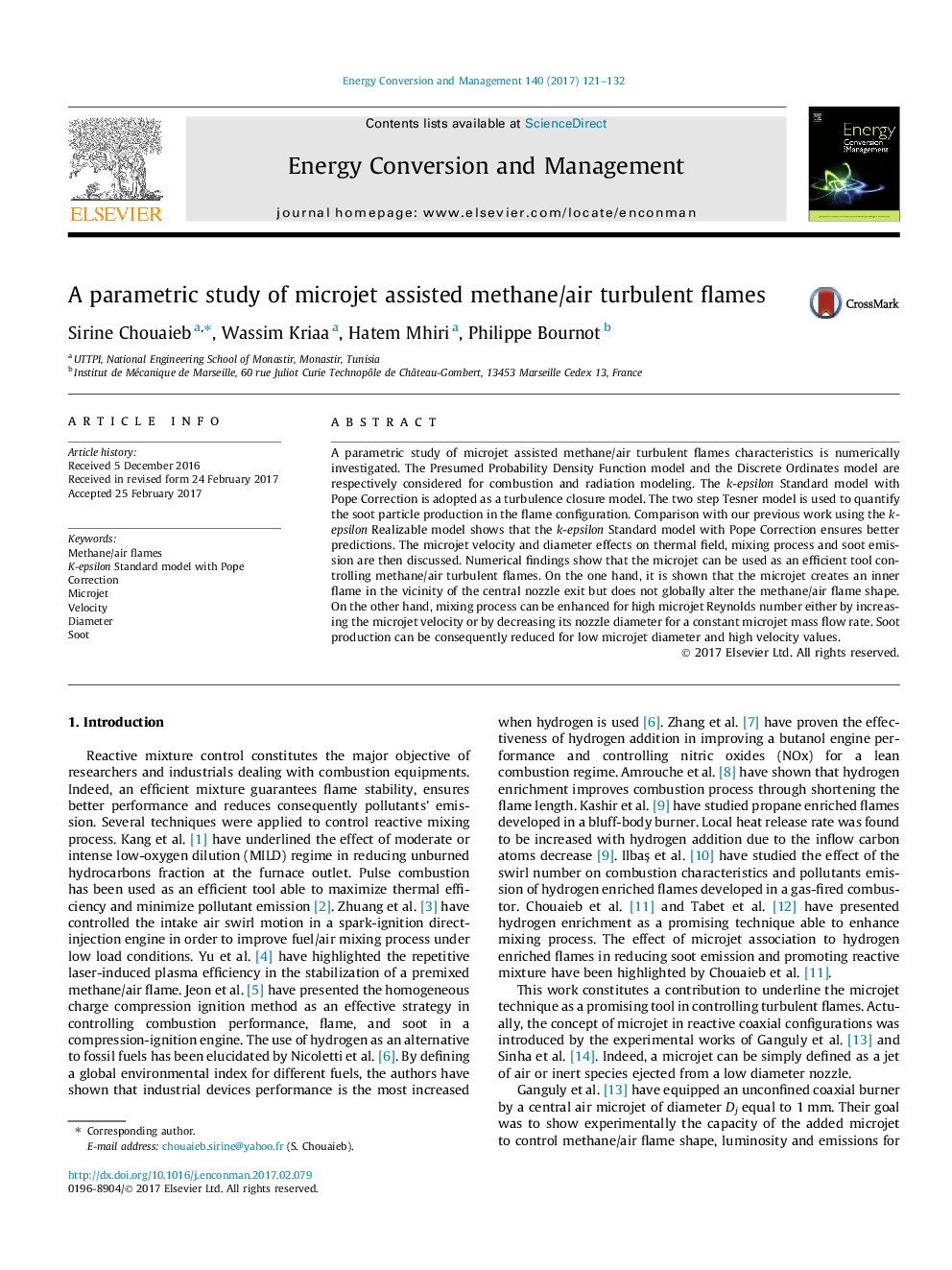| Article ID | Journal | Published Year | Pages | File Type |
|---|---|---|---|---|
| 5012880 | Energy Conversion and Management | 2017 | 12 Pages |
Abstract
A parametric study of microjet assisted methane/air turbulent flames characteristics is numerically investigated. The Presumed Probability Density Function model and the Discrete Ordinates model are respectively considered for combustion and radiation modeling. The k-epsilon Standard model with Pope Correction is adopted as a turbulence closure model. The two step Tesner model is used to quantify the soot particle production in the flame configuration. Comparison with our previous work using the k-epsilon Realizable model shows that the k-epsilon Standard model with Pope Correction ensures better predictions. The microjet velocity and diameter effects on thermal field, mixing process and soot emission are then discussed. Numerical findings show that the microjet can be used as an efficient tool controlling methane/air turbulent flames. On the one hand, it is shown that the microjet creates an inner flame in the vicinity of the central nozzle exit but does not globally alter the methane/air flame shape. On the other hand, mixing process can be enhanced for high microjet Reynolds number either by increasing the microjet velocity or by decreasing its nozzle diameter for a constant microjet mass flow rate. Soot production can be consequently reduced for low microjet diameter and high velocity values.
Related Topics
Physical Sciences and Engineering
Energy
Energy (General)
Authors
Sirine Chouaieb, Wassim Kriaa, Hatem Mhiri, Philippe Bournot,
